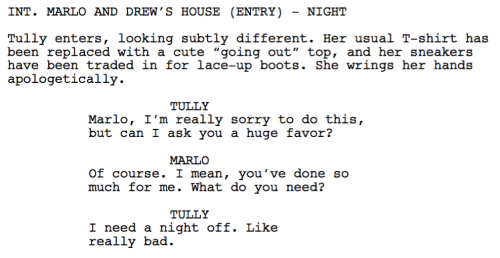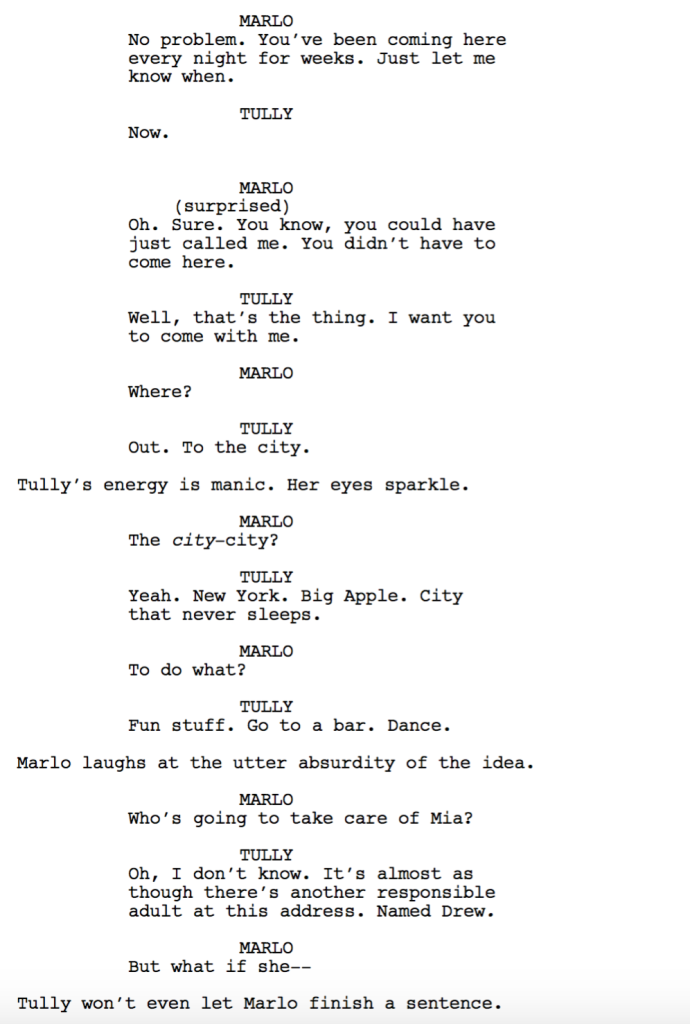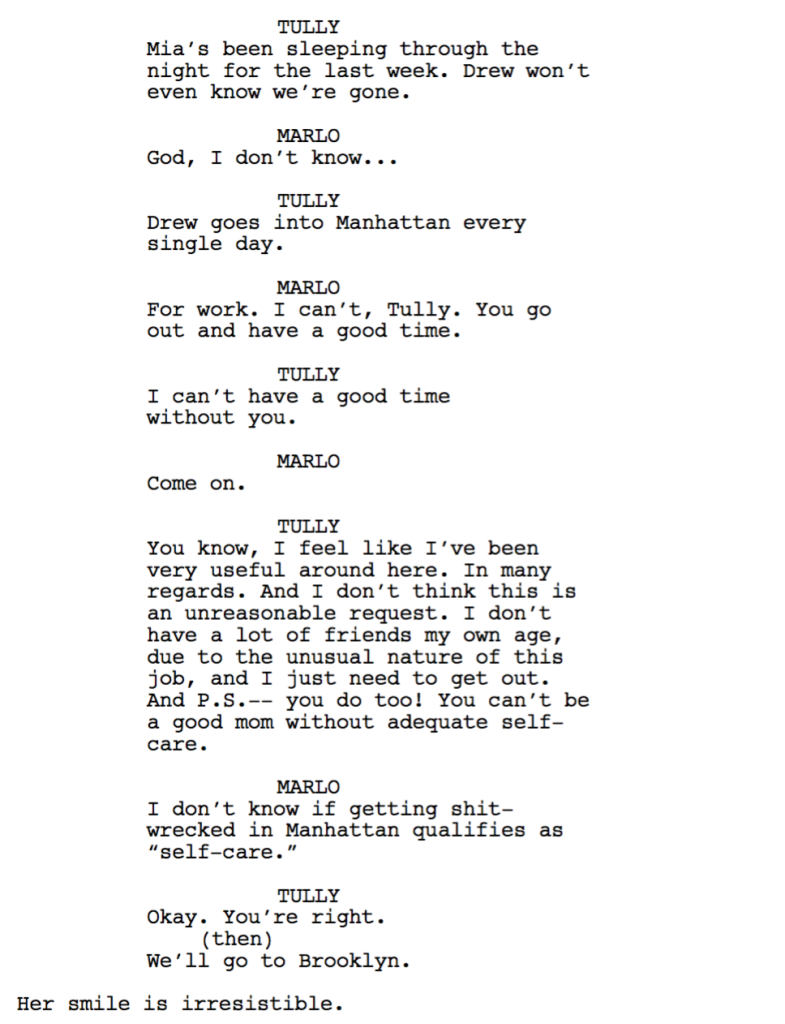I was thinking about major screenwriting mistakes the other day and it got me thinking: “What’s the single most common screenwriting criticism given?” I didn’t even have to blink before I had my answer. Or maybe I should say, I didn’t even have to sniffle. ON-THE-NOSE DIALOGUE. Every writer, from beginner to advanced, has heard that criticism numerous times throughout their career. So I thought, “Let’s nip this on-the-nose thing in the bud once and for all.”
But before we do, we must define what on-the-nose dialogue is. I see on-the-nose dialogue as obvious surface-level conversation where the characters say exactly how they feel and/or exactly what they’re thinking. Here’s a blatant example of on-the-nose dialogue:
“How are you today?”
“I’m doing well. How are you?”
“I had a tough day but I’m feeling better now that you’re home. Thank you for asking.”
Ugh. Notice how straight-forward the words are. There’s no emotion. There’s no nuance. There’s nothing unexpected. The characters are basically robots going through the motions.
On-the-nose dialogue can also extend into exposition, where characters will often skip subtlety and deliver only the lines that the audience needs in order to understand what’s going on.
“How are we going to defeat Ragbob the Zombie-God if he’s undead?”
“You said he hated water right?”
“Yes.”
“So we’ll lure him to Smith River and throw him in.”
“But Jake said he becomes immortal at midnight.”
“Then we have to hurry.”
While it’s true that you need to explain what’s happening in your plot at times, notice how these characters don’t appear to be talking to each other, but rather directly to the audience. That’s a good indication that your dialogue is on-the-nose.
So I was searching for an easy way to identify on-the-nose dialogue and I think I found the answer. On-the-nose dialogue is LOGICAL. If I ask you the question, “How many miles per gallon does your car get?” the logical answer to that would be, “I think 28 miles per gallon.” Logically, you’ve answered my question. However, you’ve done so in a very boring, on-the-nose way.
This is what screenwriters have to realize. Real conversation isn’t always logical. Sometimes it is. But often it isn’t. It’s a topsy-turvy mess of fragmented thoughts, unfinished sentences, sarcasm, unspoken secrets, suppressed information, humor, you name it.
Under that reality, you can move away from on-the-nose and give us dialogue that feels more alive. “How many miles per gallon does this car get?” “I don’t know who do I look like, Mario Andretti?” Or, if you were writing a drama: “How many miles per gallon does this car get?” “Not enough.”
As writers, the logical side of our brain is extremely important because we’re constantly having to keep the plot sorted and make sure every scene has a purpose and make sure every character’s motivation is clear and blah blah blah. So it’s only natural that once we segue into dialogue, we keep that logical side of our brain with us.
However, if there’s one thing I want you to take away from this article, it’s that once you segue into dialogue, you want to turn off your logical brain and embrace the illogical. Again, if you listen to real-life conversation, it’s messy as hell. People ramble. Questions are asked and never answered. Or a question is asked but the question reminds the other person of something else they wanted to talk about. People ignore each other because they just received a text on their phone. People aren’t always present in a conversation because their mind is worrying about something else.
You can’t completely capture the randomness of real conversation because real people sometimes have hours to talk, whereas your dialogue scene may take place over three minutes. But you can approximate some of these things to simulate it.
Let’s get back to exposition because in some ways, it’s harder to avoid on-the-nose dialogue in instances where it’s imperative that the audience understand what’s going on. I mean, imagine if, in Back to the Future, they never had any conversations about how they were going to get Marty back to the future and instead just threw us into that end scene. We’d probably be pretty confused.
The most common way to avoid on-the-nose expositional dialogue is through humor. That’s what they did with Back to the Future, and more recently in Avengers: Infinity War, when the Guardians of the Galaxy find Thor and have to split up into two teams to achieve two different goals. I’m not going to say the scene was perfectly-executed, but the use of humor (namely through Starlord’s jealousy of Thor) made all that exposition more palatable.
But sometimes, the genre isn’t conducent to humor. Or, at least, over-the-top humor, such as the examples above. So what do you do then? Well, one thing you can do is go back to basics. What’s the principle tool that makes a scene work? You know this because I made it a focus last week. CONFLICT. If you add an element of conflict, the focus of the scene becomes bringing that conflict into balance as opposed to focusing on the exact words the characters are saying. If you do this, and also sprinkle in a few illogical responses, you can avoid that “on-the-nose” label.
Let’s look at a scene from the movie Tully. This scene occurs late, when Tully (the night nanny who’s been helping our hero take care of her baby) asks Marlo (our hero/overworked mom) to come out with her for a night. While this script isn’t plot-heavy, it’s probably the most plot-centric beat in the movie. This night needs to occur for Margot to finally have fun again and have her breakthrough that will allow her to arc.
Notice how the simple inclusion of conflict (Tully’s asking Marlo to go – Marlo’s resisting) keeps us less focused on the dialogue and more on whether she’s going to do this or not.
You’ll notice that there are some on-the-nose “logical” lines here. “You know, I feel like I’ve been very useful around here. In many regards. And I don’t think this is an unreasonable request. I don’t have a lot of friends my own age, due to the unusual nature of this job, and I just need to get out.” But I never said that everything needed to be illogical. Only that there is a mix of the two. There are plenty of instances of messy fun conversation as well. “Where?” “Out. To the city.” “The city-city?” “Yeah. New York. Big Apple. City that never sleeps.” Later: “Who’s going to take care of Mia?” The logical response to this is, “Your husband.” Instead, Cody went with, “Oh, I don’t know. It’s almost as though there’s another responsible adult at this address. Named Drew.”
It should also be noted that sometimes on-the-nose dialogue isn’t on-the-nose dialogue. That it all depends on the context. For example, let’s look at that opening dialogue example again. “How are you feeling?” “I’m doing well. How are you?” Boring and on-the-nose, right? Except, what if, in the previous scene, we just saw this character brutally murder someone? Cut to them walking in their home and their wife, none-the-wiser, greeting them. “How are you feeling?” “I’m doing well. How are you?” The line feels completely different now, right? It’s actually not on-the-nose at all. A shift in context can quickly change the perception of any dialogue. Important to remember.
But, again, the main thing I want you to take away here is that your mind needs to shift when it moves into the dialogue portions of your script. You need to ditch the robot in your head that’s trying to keep everything sorted and give in to the organic nature of the conversation you’re documenting. Don’t try and force words out of your characters’ mouths. Let them say what they want to say.





